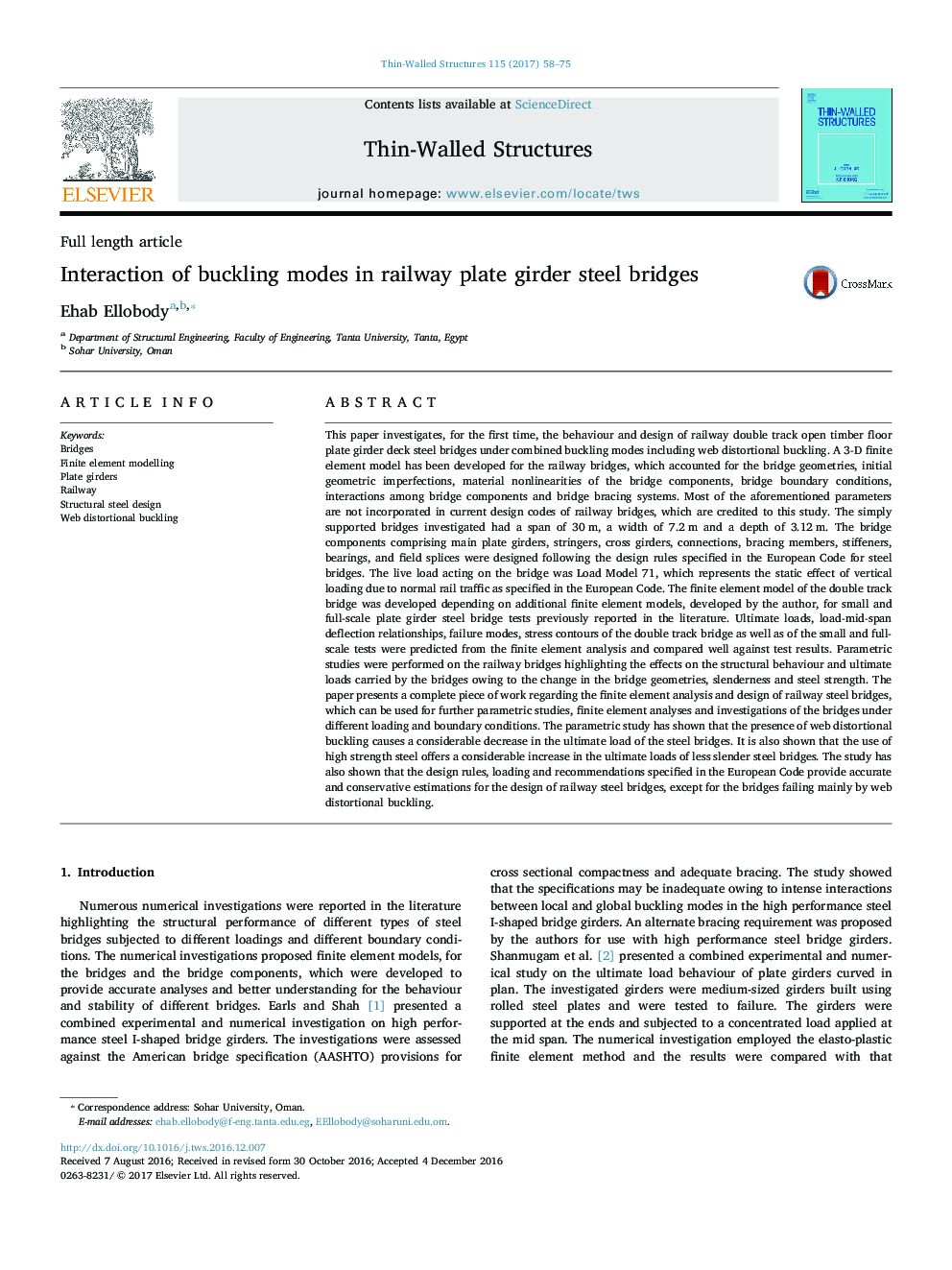| کد مقاله | کد نشریه | سال انتشار | مقاله انگلیسی | نسخه تمام متن |
|---|---|---|---|---|
| 4928643 | 1432076 | 2017 | 18 صفحه PDF | دانلود رایگان |
عنوان انگلیسی مقاله ISI
Interaction of buckling modes in railway plate girder steel bridges
ترجمه فارسی عنوان
تعامل حالت های خمشی در پل های پل فولادی پل راه آهن
دانلود مقاله + سفارش ترجمه
دانلود مقاله ISI انگلیسی
رایگان برای ایرانیان
کلمات کلیدی
پل ها، مدل سازی عنصر محدود تیرهای کفپوش، راه آهن، طراحی فولاد سازه، لرزش تحریف شده وب
موضوعات مرتبط
مهندسی و علوم پایه
سایر رشته های مهندسی
مهندسی عمران و سازه
چکیده انگلیسی
This paper investigates, for the first time, the behaviour and design of railway double track open timber floor plate girder deck steel bridges under combined buckling modes including web distortional buckling. A 3-D finite element model has been developed for the railway bridges, which accounted for the bridge geometries, initial geometric imperfections, material nonlinearities of the bridge components, bridge boundary conditions, interactions among bridge components and bridge bracing systems. Most of the aforementioned parameters are not incorporated in current design codes of railway bridges, which are credited to this study. The simply supported bridges investigated had a span of 30Â m, a width of 7.2Â m and a depth of 3.12Â m. The bridge components comprising main plate girders, stringers, cross girders, connections, bracing members, stiffeners, bearings, and field splices were designed following the design rules specified in the European Code for steel bridges. The live load acting on the bridge was Load Model 71, which represents the static effect of vertical loading due to normal rail traffic as specified in the European Code. The finite element model of the double track bridge was developed depending on additional finite element models, developed by the author, for small and full-scale plate girder steel bridge tests previously reported in the literature. Ultimate loads, load-mid-span deflection relationships, failure modes, stress contours of the double track bridge as well as of the small and full-scale tests were predicted from the finite element analysis and compared well against test results. Parametric studies were performed on the railway bridges highlighting the effects on the structural behaviour and ultimate loads carried by the bridges owing to the change in the bridge geometries, slenderness and steel strength. The paper presents a complete piece of work regarding the finite element analysis and design of railway steel bridges, which can be used for further parametric studies, finite element analyses and investigations of the bridges under different loading and boundary conditions. The parametric study has shown that the presence of web distortional buckling causes a considerable decrease in the ultimate load of the steel bridges. It is also shown that the use of high strength steel offers a considerable increase in the ultimate loads of less slender steel bridges. The study has also shown that the design rules, loading and recommendations specified in the European Code provide accurate and conservative estimations for the design of railway steel bridges, except for the bridges failing mainly by web distortional buckling.
ناشر
Database: Elsevier - ScienceDirect (ساینس دایرکت)
Journal: Thin-Walled Structures - Volume 115, June 2017, Pages 58-75
Journal: Thin-Walled Structures - Volume 115, June 2017, Pages 58-75
نویسندگان
Ehab Ellobody,
